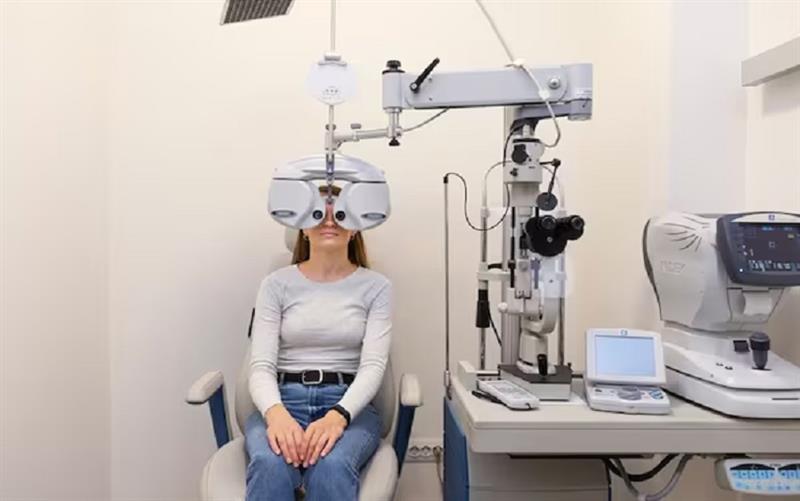
Hospital eye departments are being revolutionized by specialized software that integrates cutting-edge diagnostic technologies, streamlines operations, and improves patient care. Ophthalmologists may now provide faster, more accurate, and more effective eye care because to technological breakthroughs like AI-powered diagnostics and seamless teleophthalmology services. Hospitals hoping to remain at the forefront of ophthalmic treatment and innovation will need to invest in specialist software as healthcare continues to change.
Hospital eye departments are not an exception to the way technology is transforming the healthcare sector. Specialized ophthalmology software is essential to improving patient care and operational efficiency due to the growing need for accurate diagnosis, effective patient management, and streamlined workflows. Hospital eye departments are going through a radical change because to AI-driven diagnostic tools and electronic health records (EHR).
1. Enhanced Patient Data Management
Manually maintaining patient records can be laborious and error-prone. Ophthalmology-specific EHR software enables eye physicians to:
Instantaneous patient record storage and retrieval minimizes paperwork and administrative hold-ups.
To improve the effectiveness of follow-up care, keep a thorough record of all eye diseases, including previous operations, treatments, and prescription drugs.
Assure smooth data exchange across departments and medical specialists to facilitate team decision-making and all-encompassing patient care.
Give ophthalmologists instant access to patient history so they can make well-informed treatment decisions more quickly.
2. AI-Powered Diagnostics and Imaging
Artificial intelligence (AI) and machine learning (ML) are combined in advanced ophthalmic software to improve diagnostic precision. Features consist of:
Reduced human error in diagnosis by automated identification of diseases such cataracts, macular degeneration, diabetic retinopathy, and glaucoma.
AI-driven image analysis that improves early illness identification and treatment planning by quickly scanning and interpreting retinal images.
Ophthalmologists can make evidence-based judgments with the help of decision support technologies that offer real-time suggestions based on large datasets.
Cloud-based image storage that lets experts see and compare photos over time to monitor the course of an illness.
3. Streamlined Appointment Scheduling
Timely service for patients is guaranteed by a well-structured scheduling system. specialized software provides:
Automated scheduling of appointments that maximizes patient flow and cuts down on wait times.
Sending out email or SMS reminders reduces no-show rates and increases patient compliance with follow-up appointments.
Accessibility for patients unable to visit in person is improved through integration with telemedicine platforms, which enable virtual consultations.
Algorithms for scheduling that can be altered to emphasize urgent cases while preserving efficiency for regular visits.
4. Improved Workflow Automation
Regular administrative duties are made easier by specialized software, freeing up medical personnel to concentrate more on patient care. Important advantages include:
Pre-examination checklists and consent documents can be completed digitally, doing away with the requirement for paper records.
Processing insurance claims and billing automatically lowers administrative costs and guarantees quicker payouts.
Task management solutions that guarantee thorough patient care by enabling physicians and personnel to keep track of impending procedures, prescription regimens, and follow-ups.
Automated reminders for routine testing and medicine refills, which improve treatment plan adherence.
5. Seamless Integration with Diagnostic Devices
High-tech diagnostic tools are used in modern eye departments, and software integration guarantees efficient operation. Advantages consist of:
OCT (Optical Coherence Tomography), fundus cameras, and visual field analyzers are directly synchronized with patient records for real-time analysis.
Automated interpretation of results, cutting down on manual error and the amount of time needed for diagnosis.
Remote diagnostic picture access enables experts to examine and discuss cases even when they are not physically present.
Accuracy and interoperability of data, which minimizes redundant testing and needless delays in patient care.
6. Teleophthalmology for Remote Consultations
Hospital eye departments are utilizing teleophthalmology software in light of the growth of telemedicine in order to:
Improve access to expert treatment by conducting remote consultations and virtual eye exams.
Facilitate instantaneous communication between general practitioners and ophthalmologists to expedite referrals and second views.
Give physicians the ability to evaluate and diagnose patients in remote locations by providing mobile diagnostic units that interface with telemedicine software.
By managing non-urgent patients remotely, hospitals may relieve some of their workload and free up resources for crucial treatment.
7. Enhanced Compliance and Data Security
It's crucial to make sure that HIPAA, GDPR, and other healthcare laws are followed. Software for ophthalmology consists of:
Encrypted patient data storage that shields sensitive information from cyber attacks.
Role-based access controls guarantee that patient records can only be viewed or edited by authorized personnel.
Automated compliance reporting, which makes it simple for hospitals to meet regulatory requirements.
Audit logs that monitor all data changes, guaranteeing accountability and openness in documentation.
8. Customizable Reporting and Analytics
Departmental productivity and patient outcomes are enhanced by data-driven insights. Features consist of:
Automated reports that support research and strategic planning by providing information on patient demographics, disease prevalence, and treatment efficacy.
Use performance analytics to find areas for improvement and workflow bottlenecks.
Forecasting patient loads through predictive analysis aids departments in effectively allocating resources.
Evaluations of the quality of care that enable hospitals to track treatment success rates and patient satisfaction.
9. Enhanced Patient Engagement
When used with ophthalmology software, patient portals enable:
Patients are empowered to take proactive measures to manage their eye health by having easy access to their medical history, prescriptions, and scheduled appointments.
Direct connection with medical professionals can improve patient satisfaction and cut down on needless visits.
Preventive measures, post-treatment care, and pre-surgery preparation are all covered in these educational resources on eye health.
Digital prescription management that enables online medication refills and renewal notifications for patients.
10. Training and Skill Development for Medical Staff
Additionally, ophthalmology software facilitates ongoing learning and skill development by offering:
Online courses that teach new hires how to effectively operate specialist diagnostic tools.
Ophthalmologists can rehearse sophisticated procedures in a risk-free setting with AI-powered surgical simulations.
Access to current clinical recommendations in real time, guaranteeing that medical professionals and nurses are up to date on the most recent developments in eye care.
Medical practitioners can increase diagnosis precision by using case study databases to learn from previous cases.